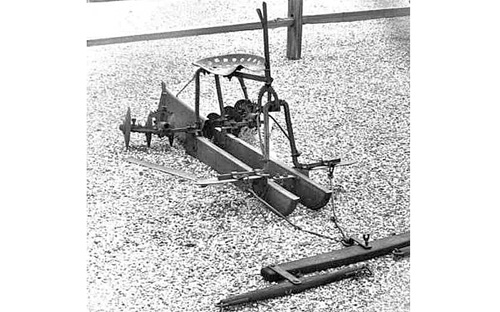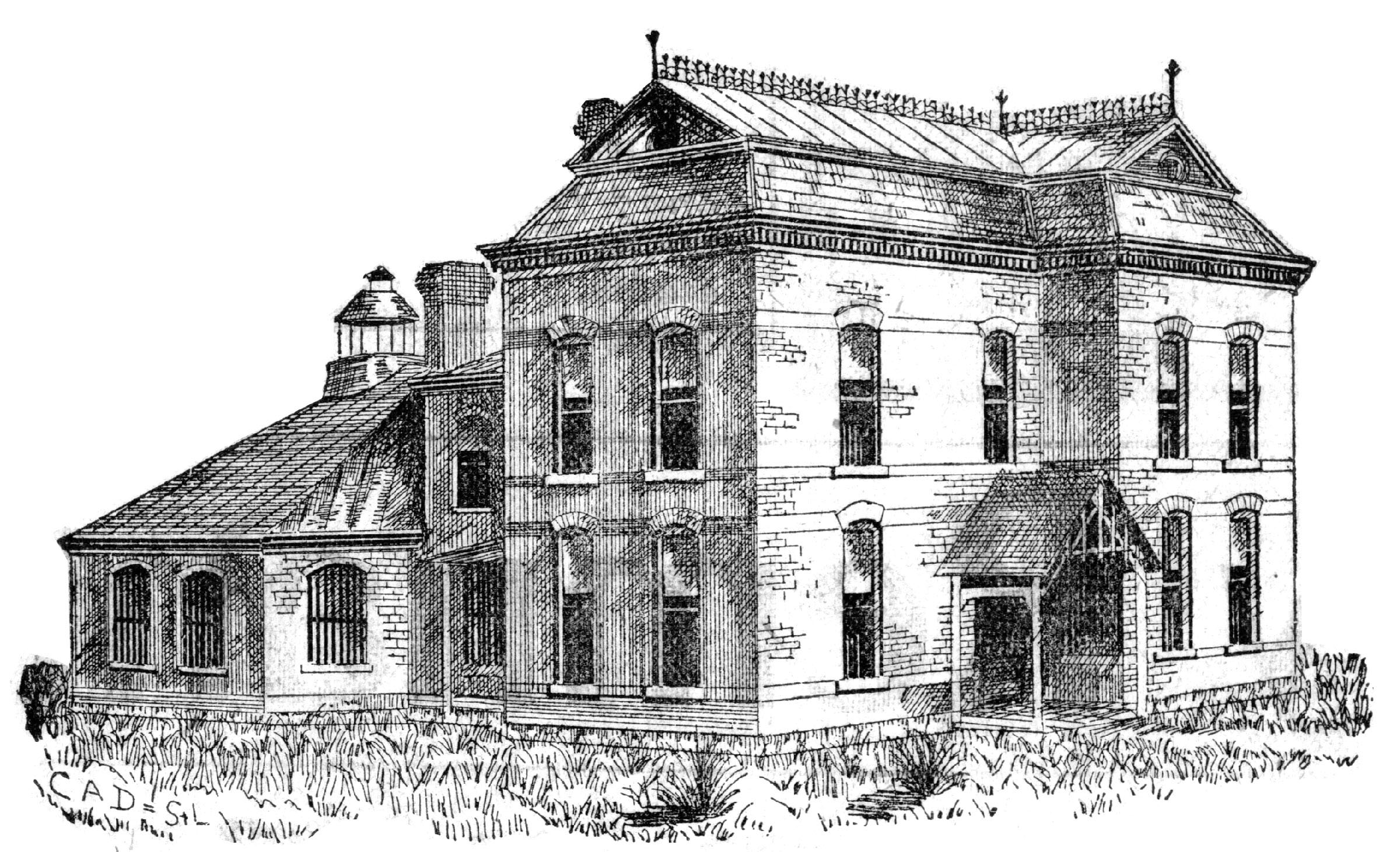The term “Go-Devil” seems to be a brand name such as Allis Chalmers or John Deere. Among other things there are Go-Devil boats and engines.
Probably the two Go-Devils that would interest us the most would be the sled and the one that had disk-like wheels and was used in the fields to hold the moisture. One type of Go-Devil, the sled, was used to drag or carry small logs and other light things. It had the typical two runners, seat, and was made in such a way to be utilized in the above. The runners were usually made from 2×6’s.

The second type of Go-Devil was mostly metal and had large spoked wheels on the outside. Inside there were thee small disk-like blades on both the right and the left side. When planting corn a horse walked on each side of the row being planted as the kernels fell from a seed box and into the furrows. At that time, corn was planted in hills, usually using the checker method. A man would walk down the rows and by using a hand corn planter would plant 10 or 12 kernels of corn in each hill.
The Go-Devil was used in the depression days to help keep moisture in the soil and allow the kernels to be planted deeper. In turn, this allowed the roots to grow deeper in the ground. It could be used as soon as the tiny shoots were tall enough the Go-Devil wouldn’t cover them and could be used until the stalks were so tall it would break them.
A lister is much like a walking plow, but instead of one side curved to make a furrow it has two sides that come to a point in the shape of “>” and makes a larger furrow by throwing the dirt both ways. Furrows were usually plowed to a distance of 42 or 44 inches from center to center, and it left the soil ridged between. Cultivation was accomplished by cutting down the ridge gradually, throwing the dirt around the growing corn.
On man’s stepfather had a team of mules he used. He drove a 200 mile stretch from Iowa to Missouri, which took 10 days. He’d always listed his field in Iowa and he still wanted to farm the same way in Missouri. He used a double lister to make two planter rows and then followed it up with a two row corn planter.
Some farmers made hard work of the double lister. They listed the field, split the ridges by a second operation with the same tool, and planted the corn with a separate plate. The first time open listing and the second time splitting the ridges and using the subsoiler and planting attachment.
— written and presented by Wilbur Bush, Gallatin, MO

Farmers often adapted the planter to plant the corn in deeper furrows. This planter was known as a “lister.” The lister would plant the seeds in a deeper furrow and cover them leaving a four or five inch mound of dirt on either side of the furrow.

